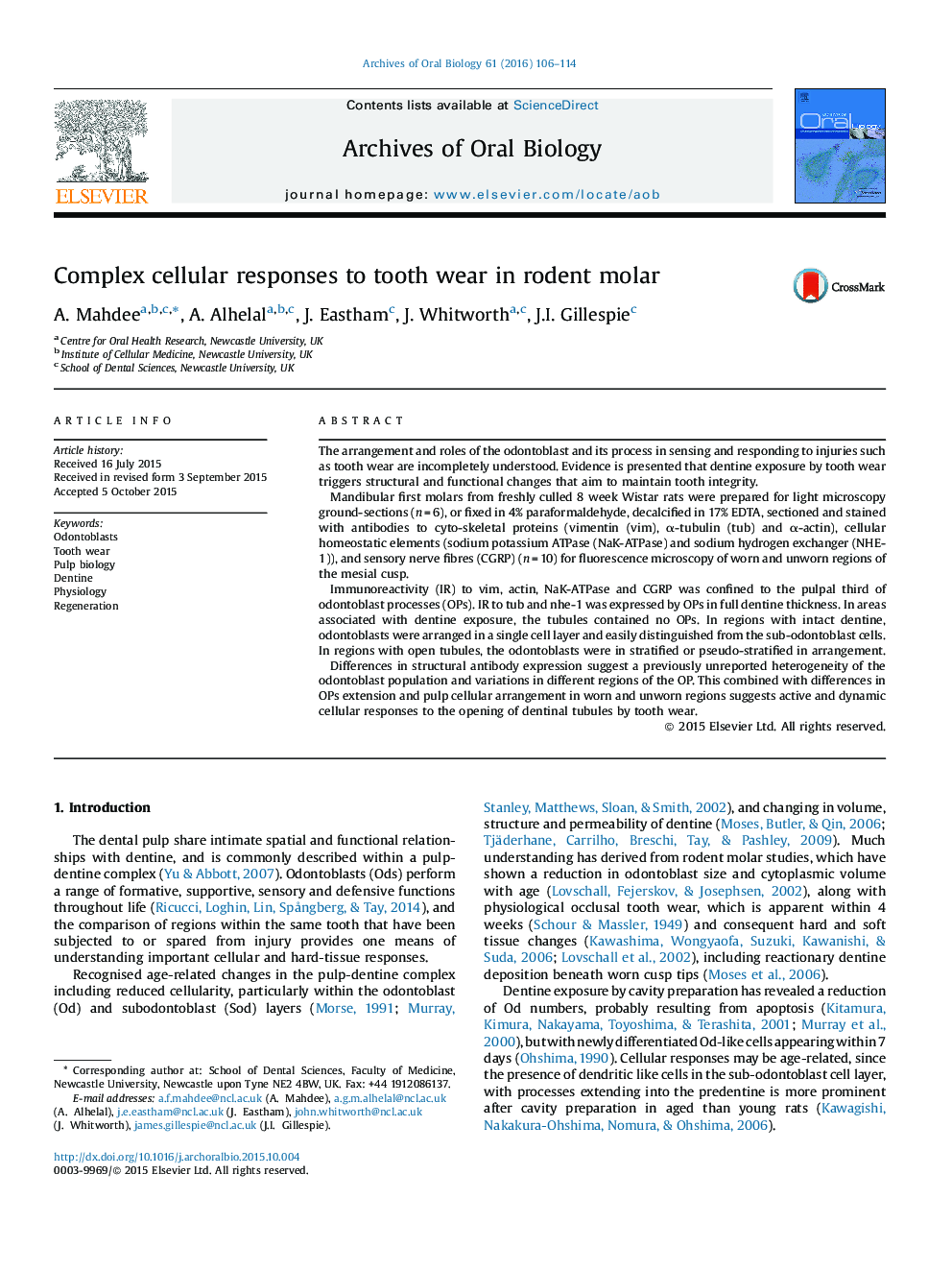| کد مقاله | کد نشریه | سال انتشار | مقاله انگلیسی | نسخه تمام متن |
|---|---|---|---|---|
| 3120730 | 1583292 | 2016 | 9 صفحه PDF | دانلود رایگان |
• In rodent model odontoblast processes extend to the outer dentine.
• Complex arborisation are seen in the distal third of the odontoblast process.
• Odontoblast processes retracted to the inner third of exposed dentine surface.
• Time dependant changes in the pathological process has been identified.
The arrangement and roles of the odontoblast and its process in sensing and responding to injuries such as tooth wear are incompletely understood. Evidence is presented that dentine exposure by tooth wear triggers structural and functional changes that aim to maintain tooth integrity.Mandibular first molars from freshly culled 8 week Wistar rats were prepared for light microscopy ground-sections (n = 6), or fixed in 4% paraformaldehyde, decalcified in 17% EDTA, sectioned and stained with antibodies to cyto-skeletal proteins (vimentin (vim), α-tubulin (tub) and α-actin), cellular homeostatic elements (sodium potassium ATPase (NaK-ATPase) and sodium hydrogen exchanger (NHE-1)), and sensory nerve fibres (CGRP) (n = 10) for fluorescence microscopy of worn and unworn regions of the mesial cusp.Immunoreactivity (IR) to vim, actin, NaK-ATPase and CGRP was confined to the pulpal third of odontoblast processes (OPs). IR to tub and nhe-1 was expressed by OPs in full dentine thickness. In areas associated with dentine exposure, the tubules contained no OPs. In regions with intact dentine, odontoblasts were arranged in a single cell layer and easily distinguished from the sub-odontoblast cells. In regions with open tubules, the odontoblasts were in stratified or pseudo-stratified in arrangement.Differences in structural antibody expression suggest a previously unreported heterogeneity of the odontoblast population and variations in different regions of the OP. This combined with differences in OPs extension and pulp cellular arrangement in worn and unworn regions suggests active and dynamic cellular responses to the opening of dentinal tubules by tooth wear.
Journal: Archives of Oral Biology - Volume 61, January 2016, Pages 106–114
